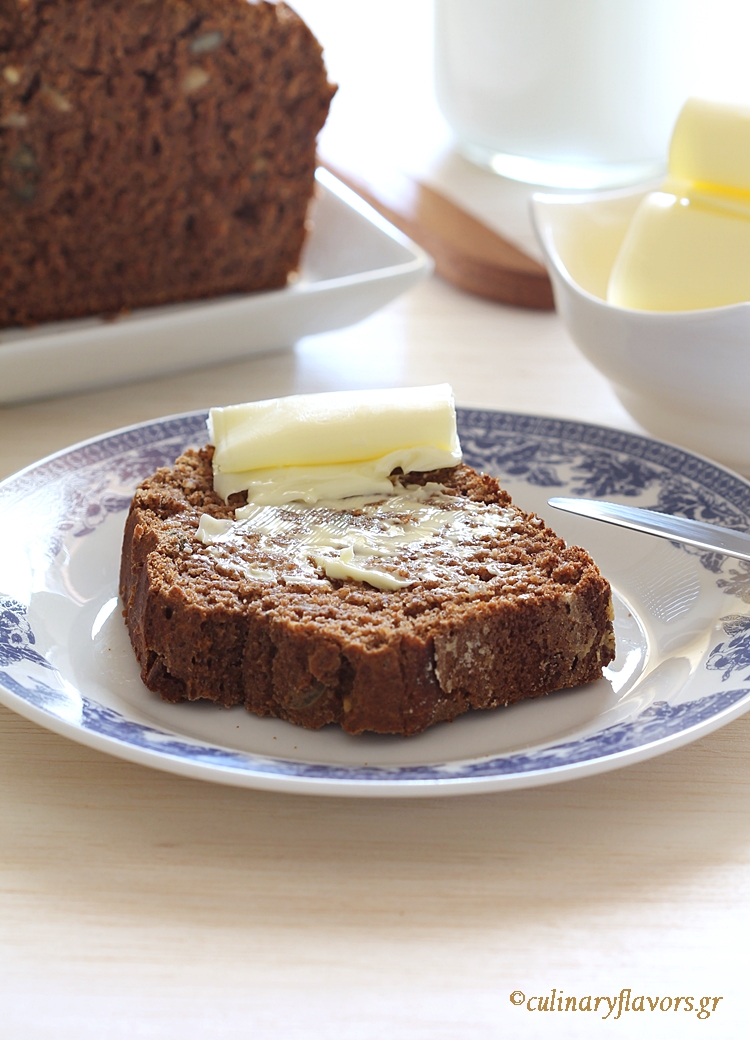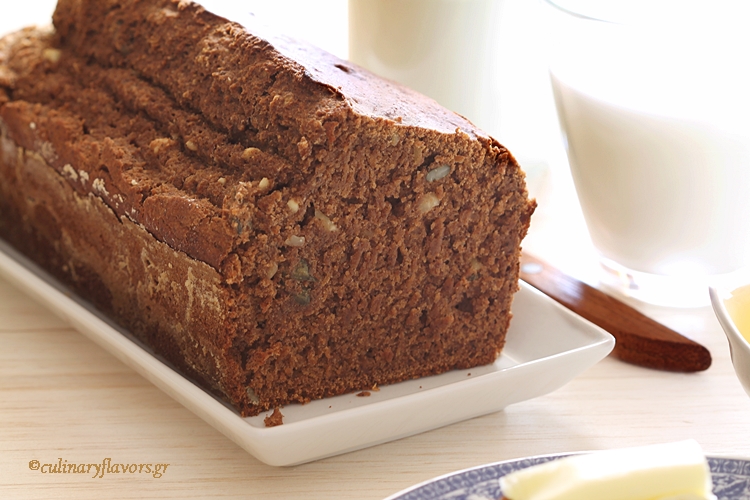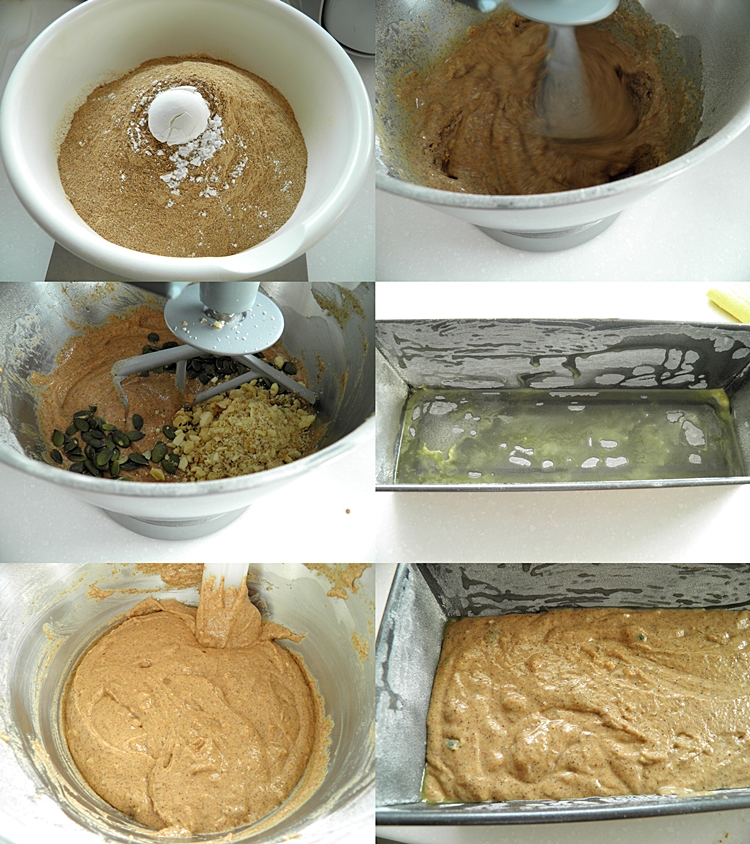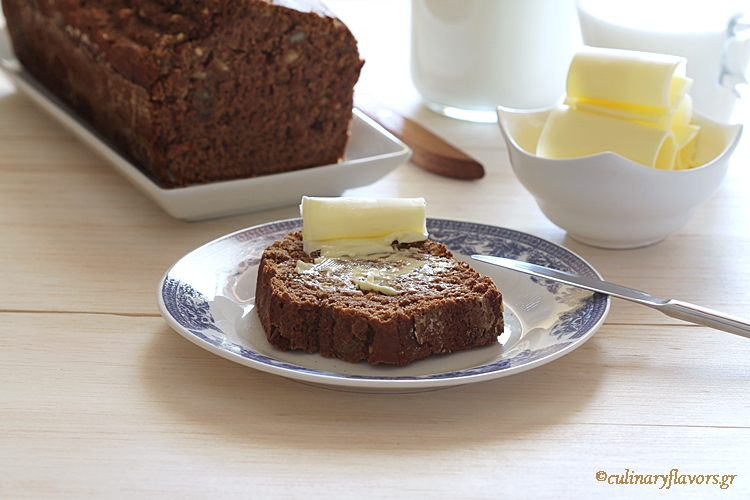Carob tree is an evergreen tree that grows in Mediterranean countries and the Middle East. Its crop looks like a hard, flat bean and has dark brown color. For many years carobs were used to feed animals, but during and after World War II and while Germans occupied Greece, carob was an essential food for people who did not have access to other ingredients. Because of its sweet taste and dark color it was given the name “chocolate of the occupation”.
After the last World War and for many years of prosperity the humble carob almost disappeared from our diet, but lately has done a very strong comeback because of its nutritional value. Carob is very rich in calcium. It is estimated that contains twice the quantity of that of milk and at the same time does not contain oxalic acid that prevents calcium’s absorption from the body. It also consists of carbohydrates, magnesium, iron, potassium, A, B1 and B2 vitamins, vegetal proteins, polyphenols and tannins that have antioxidant properties. Also, has pectin and lignin while at the same time lacks gluten which makes it perfect for people who have problems digesting it.
Carob, because of its pectin and lignin, helps in digestion and the correct function of intestines. It is also a natural medicine for diarrhea. It protects the heart by keeping the bad cholesterol (LDL) low. The honey made from carob is a great medicine for cough and all the symptoms of flu. Because of its large content of calcium, it helps in the prevention of osteoporosis especially for women.
The English word carat, the measuring unit of gold and gems, comes from carob. In ancient world, and because carob’s crop has an impressively stable weight, the ancient people were using it as a measuring unit for gold and other precious stones. Carob in ancient Greece was called “Kerátion” and from that came the word “Karáti” in Greek and Carat in English.
You can find carob in organic stores in two forms; as flour and honey. Carob flour can easily replace cocoa in all recipes in the same quantity.
I had my Name Day on the 25th of November, so my husband and I went out with some friends for dinner. Half of the bread they brought to our table was carob bread and it was the first time I tried something like it. We all loved the soft texture and its sweetness. So, I decided to try and make it at home. It is a type of semi-sweet bread and it is perfect for breakfast to spread some butter and honey or jam on top. Or place a nice slice of cheese or ham and enjoy it. Very easy to make, I think I am going to include it in our weekend breakfast ritual.
- ½ lt. / 17 fl. oz. beer
- 350 gr. / 12 oz. self-rising flour
- 150 gr. / 5.5 oz. carob flour
- 1 tsp baking powder
- 1 tbsp honey
- 1 tbsp sugar (optional)
- 2 tbsp extra virgin olive oil
- Pinch of salt
- 2 tbsp squash seeds
- 2 tbsp white raw almonds roughly chopped
- 2 tbsp raw walnuts roughly chopped
- Oil and flour for the baking pan
- Preheat oven to 200°C / 400°F.
- In your stand mixer place the flours, baking powder and salt and mix slowly with the paddle to incorporate.
- Add all the rest of the ingredients except the seeds and nuts.
- Mix at the slowest speed to incorporate everything.
- Add the seeds and nuts and mix again couple of times at the slowest speed to incorporate them as well.
- Take a bread pan with dimensions 30 cm X 11 cm / 12 in. X 4.5 in.
- Butter it and flour it.
- Pour the batter and bake for 15 minutes at 200°C / 400°F.
- Lower temperature to 175°C / 350°F and bake for another 25 minutes or until the knife comes out clean.
- Remove from the oven, let it cool and serve.
- ½ λίτρο μπύρα
- 350 γρ. αλεύρι που φουσκώνει μόνο του
- 150 γρ. χαρουπάλευρο
- 1 κ.γ. μπέικιν πάουντερ
- 1 κ.σ. μέλι
- 1 κ.σ. ζάχαρη (προαιρετικά)
- 2 κ.σ. έξτρα παρθένο ελαιόλαδο
- 1 πρέζα αλάτι
- 2 κ.σ. σπόρους κολοκύθας
- 2 κ.σ. λευκά ωμά αμύγδαλα χοντροκομμένα
- 2 κ.σ. ωμά καρύδια χοντροκομμένα
- Λάδι και αλεύρι για το ταψί
- Προθερμαίνουμε το φούρνο στους 200° C.
- Στον κάδο του μίξερ τοποθετήστε τα αλεύρια, το μπέικιν πάουντερ και το αλάτι και ανακατέψτε σιγά σιγά να ενσωματωθούν.
- Προσθέστε όλα τα υπόλοιπα υλικά εκτός από τους σπόρους και τους ξηρούς καρπούς.
- Ανακατέψτε στην πιο αργή ταχύτητα για να ενσωματωθούν και αυτά.
- Ρίξτε τους σπόρους και τους ξηρούς καρπούς και ανακατέψτε και πάλι στην πιο αργή ταχύτητα για να ενσωματωθούν και αυτά.
- Πάρτε μία φόρμα με διαστάσεις 30 cm X 11 cm.
- Βουτυρώστε και αλευρώστε.
- Ρίξτε το μίγμα και ψήστε για 15 λεπτά στους 200° C.
- Χαμηλώστε τη θερμοκρασία στους 175°C και ψήστε για άλλα 25 λεπτά ή μέχρι το μαχαίρι να βγαίνει καθαρό.
- Αφαιρέστε από το φούρνο, αφήστε να κρυώσει και σερβίρετε.





